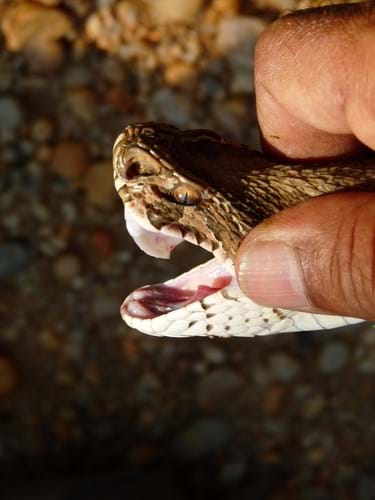Blog leads to a breakthrough in antivenoms (Day 307)

30th March 2015
Being a part of the blogosphere over the past 307 days has opened my eyes to how many of us bloggers are actually out there. So I was especially pleased to read today’s story about how blogging caused a scientific breakthrough.
Research into the innate immunity of opossums (marsupials found in the Americas) to a variety of snake venoms and their possible use to create antivenoms was first patented by Binie Ver Lipps in 1996.

However, this research went largely unnoticed. But Binie's work was mentioned by a blogger in 2012. This led to an article being written on Yahoo!News, which was subsequently read by chemical engineering professor Dr Claire F. Komives.
Inspired by the story Claire and her team, from San Jose State University, US, demonstrated that genetically modified bacteria could produce the protective peptide at low costs.
This simple peptide could prevent countless deaths from snakebites and the antivenom relies on a sequence of just 11 amino acids, copied from an opossum protein.
The opossums' immunity to venoms was isolated by Binie to a single protein. She found that peptides containing the proteins' first 10 or 15 amino acids seemed to contain all of the protein’s antivenomous properties.
For some reason Binie’s work was not generally noticed until it was blogged about. Claire learned about the protein while searching for ideas for a research project that would allow her to work with a colleague in India while on sabbatical.
Claire has now unveiled the antivenom candidate, but the fundamental discoveries behind the findings were made by Binie.

Death from a snakebite is surprisingly common in India. According to some estimates, snakes are responsible for 100,000 deaths every year; especially in rural areas where access to antivenom is limited.
Claire has worked to develop an inexpensive method for producing the natural opossum product. Working in collaboration with the Indian Institute of Technology Delhi, Claire has engineered Escherichia coli to synthesise peptides containing multiple repeats of the first 11 amino acids of the opossum protein.
Production of the peptides simply required ordering a plasmid and growing engineered bacteria. However, the team still need to optimise the peptide purification process.
Claire estimates that once scaled up, companies could produce the peptides for around UK £0.67 per gram.
Collaborators at the National Natural Toxins Research Center at Texas A&M University have confirmed that Claire's synthetic version of the peptide protects mice against the effects of venom from Russell’s viper (Daboia russelii), a common snake in India, and helps mice survive exposure to rattlesnake venom.
“The bottom line is the peptide clearly does something,” says Claire, “somebody needs to be working on this.”
I think this story demonstrates the importance of ensuring that we talk about our research. Unless we communicate our work effectively we shouldn't be too surprised if no one takes any notice of us.